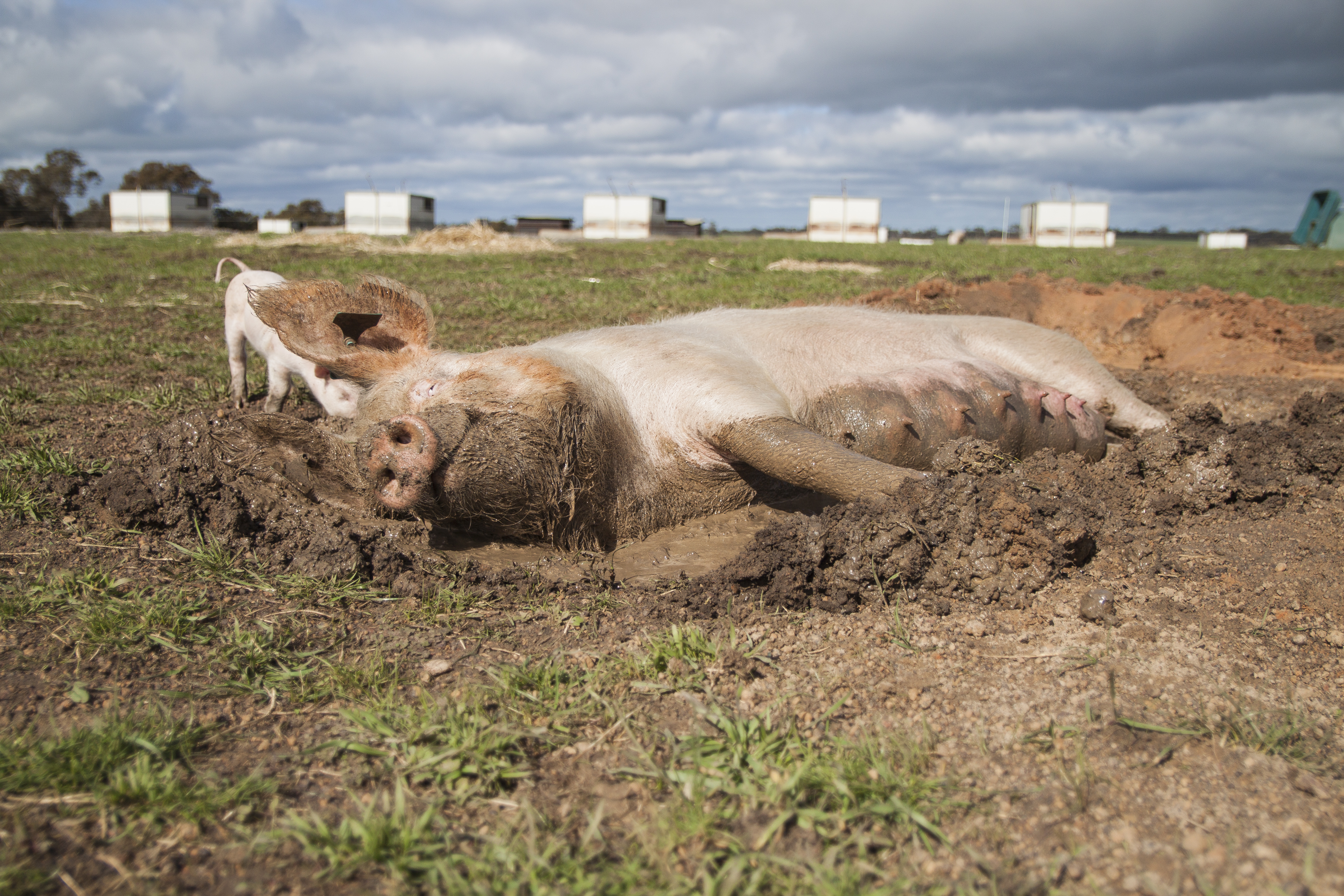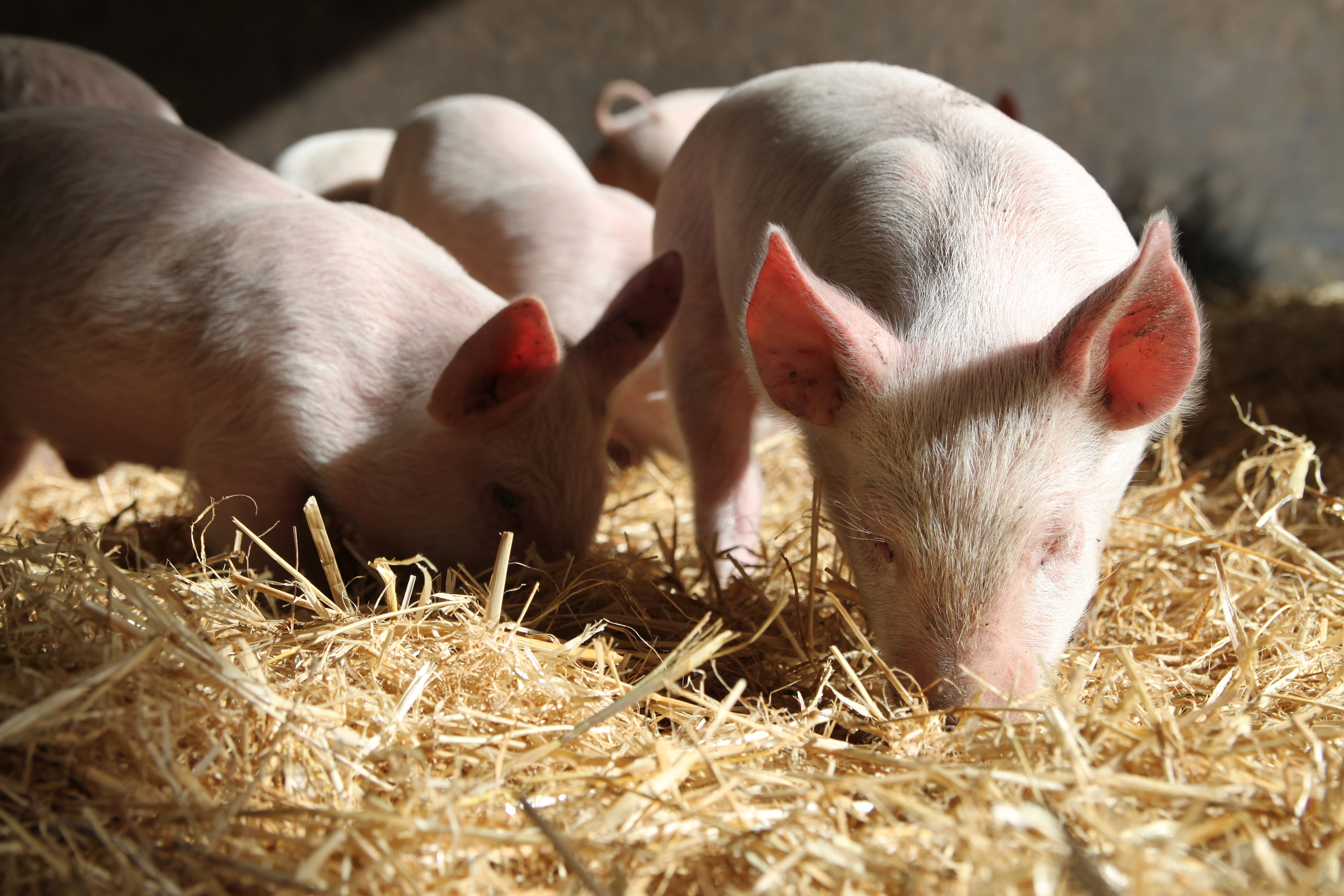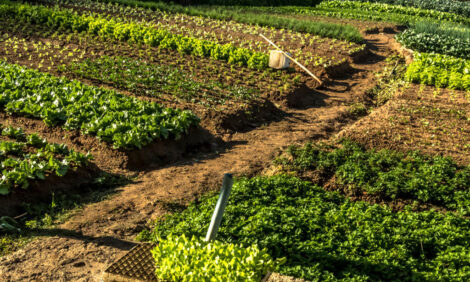



Achieving humane production in the Australian pig industry
Australia's pig farmers encounter some very different challenges in maintaining good standards of welfare on farm, but RSPCA Australia feel that they haven't yet got the recognition they deserve for the work they do.What are some of the greatest challenges that the Australian pig industry is facing in adopting higher welfare production?
Drought
One major factor holding Australian producers back at the moment is the drought that we’re going through, which has led to significantly higher input costs, specifically in terms of feed and, mainly for outdoor production, bedding material.
In terms of achieving higher welfare production on pig farms: bedding, manipulable material and enrichment provision may be difficult to implement, especially when the price for those materials is so high and accessing supply is challenging. Australia is a big country, and while in certain regions there is good access to important resources, in many others there is not.
Trade and processing infrastructure
Another challenge in Australia, is that in comparison to some other countries, Australia imports such a high volume of products, particularly in small goods. About 80 percent of the ham and bacon Australians eat is produced with imported pork. Accessing an Australian ham, bacon or processed product is limited so getting a number of higher welfare Australian pork products in front of consumers is even harder.
One contributing factor to this may be that Australian farmers don’t grow their pigs to bacon weight. Producers may actually get a better price by exporting the middles – even if they’re small middles – to other markets rather than processing them here. And because of all of those market challenges, we just don’t have as many small good processors and manufacturers in the country.
This is further exacerbated by the fact that many abattoirs don’t have stunning systems set up to process larger animals, so we just don’t see much Australian higher welfare small goods product on supermarket shelves or when eating out. Australians buying a Danish or Canadian bacon isn’t going to fund the infrastructure change and development we need in the Australian pork industry, to meet consumer expectations on animal welfare and make higher welfare bacon accessible on a national scale.

How do these challenges compare to other markets?
The welfare challenges pig farmers face globally are generally quite similar – trying to find ways to reduce tail biting and moving away from tail docking is an example of one of these global challenges, particularly in relation to transitioning away from routine husbandry procedures.
However when it comes to castration in Australia, there is not as much surgical castration, mainly because industry is rearing smaller pigs that don’t reach the heavier weights associated with boar taint. There is some Improvac use here.
This said, there are still problems with barren environments, teeth clipping, the use of farrowing crates and individual confinement of breeding boars. The RSPCA believes that these are the top line welfare issues in Australian pork production.
The use of farrowing crates is still prolific across indoor Australian pig production. While the Australian pork industry is moving away from sow stalls and implementing group housing during gestation, farrowing crates remain relatively common. Some in industry are working to understand which free farrowing systems will work best with their current infrastructure, and the genetic availability of breeds on the ground here.
As I mentioned before, there are also difficulties around sourcing appropriate bedding materials. If we have a free-farrowing system but sows have no substrate to build a nest with, is it really meeting their needs? We want to create a stress-free environment and evidence now shows that a lack of manipulable substrate for sows in late-term pregnancy can cause stress that then impacts the health of their offspring.
"If we have a free-farrowing system but sows have no substrate to build a nest with, is it really meeting their needs?"
-Talulah Gaunt, RSPCA Australia Humane Food Marketing Officer-
Which aspects of swine welfare do you feel that Australia is making progress in?
We’re seeing outdoor production continually improving, especially as there are numerous challenges in Australia that may not be the same elsewhere – the heat and drought being key issues. Ensuring proper shade provision and wallowing, preventing sunburn, and allowing pigs to actually cool off is essential to maintaining high standards of health and welfare, and outdoor producers are very aware of this.
In terms of the indoor herd, there are some producers that are progressing R&D by looking at how they can move away from those painful routine husbandry procedures and how they can move into free farrowing. The RSPCA has identified areas that industry needs to improve in, however, there is slow uptake for development of the infrastructure to actually achieve change in those areas. Add to this the problem of oversupply every 5 to 10 years – which is really detrimental to the progression of these producers – it doesn’t paint a good picture for investment.
How does the RSPCA Approved Farming scheme compare to other livestock welfare assurance schemes?
The Scheme aims to improve the lives of as many farm animals as possible, today and the Standards go above and beyond legal requirements.
It’s important to recognise that the compliance of the scheme is very robust, and we go to farm more often and see more animals than many other QA programmes.
We go to farm at least twice a year for pigs and, for poultry it’s up to four times a year. This isn’t a desktop audit and we don’t just go into one shed, our assessors walk the whole farm and the areas where there are animals so we ensure that we are seeing everything that we can.
The robustness of the RSPCA Approved Farming scheme is integral to its success with Australian industry. The Scheme has had a lot of success in meat chickens, having nearly 80 percent of the market in Australia on the scheme. This has seen great improvements to the welfare of meat chickens in Australia over the past decade.

What are the key areas that RSPCA Australia is focused on?
RSPCA Australia is committed to working and engaging with the pig industry to improve the lives of large numbers of animals. The organisation's approach is to work with industry to achieve incremental improvements for welfare in a sustainable trajectory for Australian agricultural industries.
There are three main areas where pig welfare can continue to be improved in Australia.
- Firstly, we’re looking at sows and ensuring that the remaining sow stalls that are in use are being removed, and sows group housed during their gestation are kept in systems where they have space to move and socialise as well as access to suitable enrichment and manipulable material. This work also extends to farrowing sows, to ensure that sows are not severely confined and living in environments that allow them to express their natural behaviours.
- Similarly, with growers, we’re encouraging industry to move away from painful routine husbandry procedures and making sure that the pigs have satisfactory enrichment. The expression of natural behaviours is key for us – we’re not just focusing on physical health, but also trying to achieve opportunities for all classes of pig to experience positive mental states throughout their life time.
- The third area for continual improvement is around slaughter. Research indicates that the handling process prior to the application of CO2 gas stunning is less stressful for pigs because they’re in a group, they’re moved slowly, not moved in races individually and not restrained. However, there is strong evidence of aversion to CO2 stunning for many pigs. We understand DEFRA in the UK are looking into LAPS (Low Atmospheric Pressure Stunning) for pigs and how well that can work on a commercial scale.
Looking at commercially viable ways of moving away from CO2 stunning to methods that are far less aversive, while retaining the benefits of the handling and calm process of group-stunning methods would be a positive outcome.
RSPCA Australia is very pragmatic about these issues. We want welfare improvements, and we want it to be sustainable within the industry. That’s why we look to the relevant animal welfare science but also to other markets to see what they’re doing and how it’s working, and how it could be applied here in the Australian farming context.







